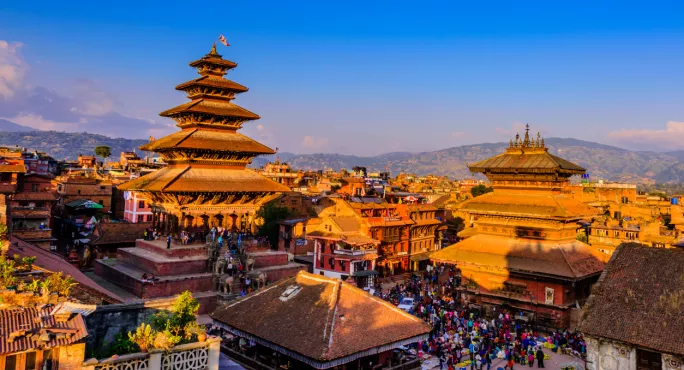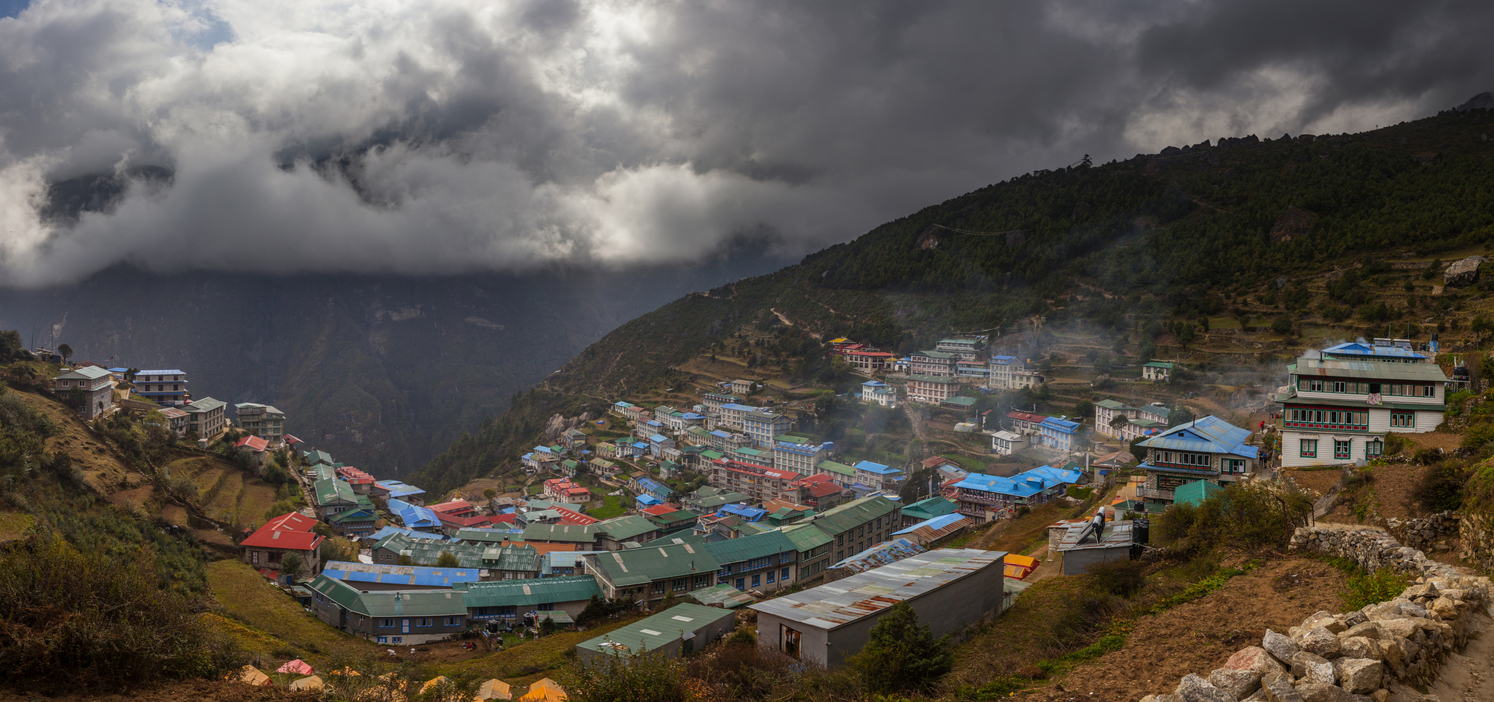The view from Nepal: Why radio lessons were our saviour

Nabina, 22, teaches in Khamare, a remote hilly village in Nepal, a two-day journey from Kathmandu.
In December, after eight long months, schools finally reopened after the start of the pandemic. For children living in the world’s most remote places, with no access to online learning, how have they managed to continue to learn?
Here, Nabina shares her story about how she taught using a radio programme reaching more than 22,000 children.
Back to school
When I returned to school last week, the children were very excited to see me. After all, this was the first time we had seen each other in person for eight months.
While many have turned to video lessons during the pandemic, for teachers in Nepal such technologies are not possible so, instead, we have been doing something quite different - broadcasting our lessons by radio.
I’ve always understood the value of education. I was born and brought up in Lalitpur, in Kathmandu valley, where I went to a community-based school.
The value of education
I’m the youngest of four children and we were all educated, but my parents were illiterate. However, in her mid 40s, my mother learnt to read, count and write her name - and I was the teacher in her adult literacy class.
I decided to train to be a United World Schools (UWS) teaching fellow after I saw how different they were. When I was a child, we learnt because we had to - it was not that much fun. But soon after I graduated from my bachelor’s degree, I witnessed these teaching fellows who had just started working at my old school.
They knew how to grab the attention and curiosity of the children. It was quite a different scenario - I really loved it and aspired to be someone like them. So I found out more and received training from UWS.
I’ve been teaching with UWS for 20 months now. Here at UWS Khamare, there are 132 pupils from four to 16 years old. It’s beautiful here, but some of the children have to walk about one and a half hours to get to school each day - as you can imagine it’s a very rural area.
Pandemic stations
When we heard the rumour about Covid-19 in mid March, we all quickly rushed back home. So, lockdown began for me the next day in Kathmandu. At first, I felt relieved to be back home; it was the end of the term so I wasn’t worried about the children’s education.
But in April, when the urban schools started teaching online, it hit us. How were we going to teach these children in rural and remote areas?
We knew fewer than half of households have access to the internet in the communities we serve. We had to innovate fast to ensure that Covid-19 would not widen already existing inequity.

Radio waves
We turned to a medium many might consider old-fashioned: radio. Over 85 per cent of households within the communities we work with have a radio. So UWS Nepal started a daily radio programme, Hamro Kakshya, initially with the aim of targeting just UWS pupils.
However, these broadcast lessons are so popular, they are now transmitted on 10 local FM stations across two regions, reaching 22,000 children, with only a quarter of these being UWS pupils.
For us teachers, this was a steep learning curve as we had to adapt teaching from a classroom full of children to recording lessons that would be broadcast across the airwaves, without the ability to check understanding or answer questions.
Adapting our teaching
However, I and nine other teachers, all working from home, did our best to adapt to this new style of teaching.
In time, we were broadcasting for four hours a day and covering everything from maths to science and language. I was the science teacher for grades 3, 4 and 5 for the radio programme.
I taught them the floating egg experiment and also did lessons on the solar system, natural disasters, cells, means of communication, the lifecycle of a butterfly and so on.
We also didn’t have any professional equipment, so we recorded on our phones, sending the lessons through for checking and on to the radio programmes.
A community project
It was important to make sure the children were aware of the lessons and participating. I kept in close contact with the community teachers in the village and instructed them to visit every child to check they were listening and to mark homework.
Most of the children really want to learn. We heard they were very excited to hear their teacher’s voice and name on the radio stations.
They also mentioned that although they loved the teaching, they were sad that the programme couldn’t be interactive and they didn’t have a chance to ask questions and have things explained further. To try to rectify this, we did get students to send us questions about a topic and we would then focus on these at the start of following lessons.
The children know they’ve missed a lot of school and are concerned they may have to repeat the year. To observe social distancing, we are alternating the year groups, so the children can only come to school every other day, and they are asking “Please, please, can we come to school daily!”
This is so pleasing to see but education in our villages is new and fragile, and we are concerned that not every child will come back to our schools after such a long break.

Lost learners
Covid-19 poses a big risk to education - the United Nations highlighted that 24 million children may never go back to school after lockdown.
I will start doing home visits next week with the most vulnerable; see the children, talk to their parents, identify their problems and work out some solutions.
Children in remote, rural areas are often left unsupervised for the whole day, with the same daily routine, which dulls their minds.
I feel they miss out on their childhood; they have lots of heavy responsibilities at home, it’s hard for them to be creative, think of a brighter future or dream beyond their village.
The radio programme was a good solution but now seeing their faces and doing live classes again is wonderful.
It makes me feel good to be back, to see the smiles of the children and their sweet gestures - they bring me fruits from their home; pineapple, mango, guava and jackfruit.
It has been a week full of excitement and surprises. The children are performing so well - they’ve missed learning and I’ve missed teaching.
Nabina, 22, is a UWS teacher in Khamare, a village in Nepal. To support teachers in Nepal, Cambodia and Myanmar with PPE, training and extra resources, please donate to United World Schools Back to Childhood appeal
You need a Tes subscription to read this article
Subscribe now to read this article and get other subscriber-only content:
- Unlimited access to all Tes magazine content
- Exclusive subscriber-only stories
- Award-winning email newsletters
Already a subscriber? Log in
You need a subscription to read this article
Subscribe now to read this article and get other subscriber-only content, including:
- Unlimited access to all Tes magazine content
- Exclusive subscriber-only stories
- Award-winning email newsletters